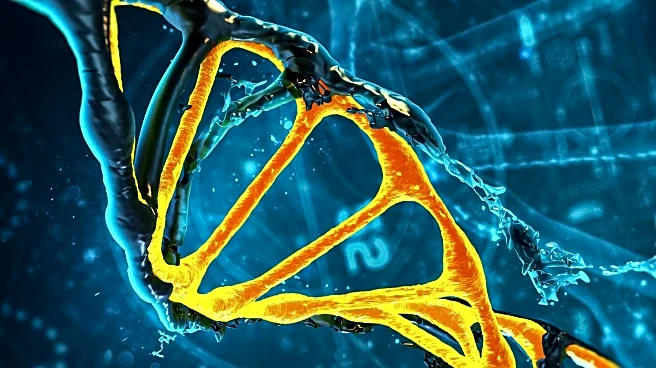What's Happening?
Researchers have identified a new class of RNA structures, termed 'obelisks,' within the human microbiome. These circular RNAs, found predominantly in oral samples, do not match any known viruses or bacteria. Obelisks are small loops of RNA that sometimes
encode proteins, a feature that distinguishes them from known viroids. The discovery was made by analyzing large RNA datasets and identifying unique structural patterns. This finding suggests a previously unrecognized layer of biological complexity within human-associated microbial communities.
Why It's Important?
The discovery of RNA obelisks challenges existing classifications of genetic entities and expands the understanding of microbial ecology. These structures could influence bacterial behavior and interactions within the microbiome, potentially affecting human health. While there is no evidence that obelisks cause disease, their presence highlights the complexity of the human microbiome and the potential for new biological interactions. This research underscores the importance of advanced data analysis techniques in uncovering hidden biological phenomena.
What's Next?
Future research will focus on understanding the role of obelisks in microbial communities and their potential impact on human health. Scientists aim to culture host microbes with and without obelisks to observe any changes in bacterial behavior. Additionally, the function of proteins encoded by obelisks, known as 'Oblins,' will be investigated. These studies will help determine whether obelisks have a significant biological role or are merely passive components of the microbiome.
Beyond the Headlines
The discovery of obelisks highlights the potential for new classes of biology to emerge from existing data when analyzed with innovative approaches. This finding encourages the development of new algorithms and methodologies to explore other unusual genetic structures. As sequencing technologies continue to advance, the potential for uncovering novel biological entities increases, offering new insights into the complexity of life.













